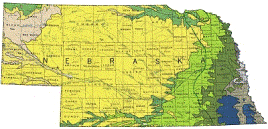US Geological Survey
Document Type
Article
Date of this Version
2005
Abstract
The quality of drinking and recreational water is currently (2005) determined using indicator bacteria. However, the culture tests used to analyze for these bacteria require a long time to complete and do not discriminate between human and animal fecal material sources. One complementary approach is to use chemicals found in human wastewater, which would have the advantages of (1) potentially shorter analysis times than the bacterial culture tests and (2) being selected for human-source specificity. At 10 locations, water samples were collected upstream and at two successive points downstream from a waste-waster treatment plant (WWTP); a treated effluent sample was also collected at each WWTP. This sampling plan was used to determine the persistence of a chemically diverse suite of emerging contaminants in streams. Samples were also collected at two reference locations assumed to have minimal human impacts. Of the 110 chemical analytes investigated in this project, 78 were detected at least once. The number of compounds in a given sample ranged from 3 at a reference location to 50 in a WWTP effluent sample. The total analyte load at each location varied from 0.018 μg/L at the reference location to 97.7 μg/L in a separate WWTP effluent sample. Although most of the compound concentrations were in the range of 0.01-1.0 μg/ L, in some samples, individual concentrations were in the range of 5-38 μg/L. The concentrations of the majority of the chemicals present in the samples generally followed the expected trend: they were either nonexistent or at trace levels in the upstream samples, had their maximum concentrations in the WWTP effluent samples, and then declined in the two downstream samples. This research suggests that selected chemicals are useful as tracers of human wastewater discharge.


Comments
Published in Environ. Sci. Technol. 2005, 39, 5157-5169.